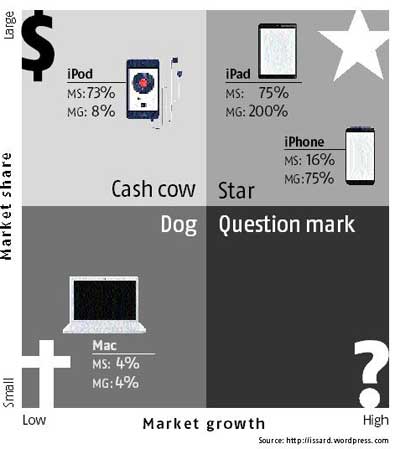Should we deal with a problem or a paradox is a question business managers may want to ponder on. Conventional wisdom suggests that problems in business or society should be first identified, diagnosed, and solutions found. If that be the case, should we bother with paradoxes at all? Let us consider a representative product portfolio of Apple Corporation as shown in a Boston Consulting Group (BCG) matrix below.
A conventional assessment of the matrix is likely to suggest that Apple should continue to invest in ipads and iphones, harvest ipods, and divest Macs.
This seems to be an appropriate way of balancing the representative portfolio of Apple. If we did this would we be missing something here? Let us consider the demographics of the buyers of Apple products. As per comScore and AdMob survey the following is the buying pattern of ipods and iphones:

Thus the paradox for Apple could be sustaining ipods until the generation which is using ipod graduates to buying some other Apple product versus milking ipods confident that they could always attract customers with their innovative products. Paradoxes seem to point towards underlying complexity of a trade when multiple dimensions are considered. In the above illustration only the age groups of the buyers were considered, however, if we included their incomes, family size, technology orientation etc., the conventional interpretation of a BCG matrix would be considerably enhanced.
Paradoxes also seem to bring out the short term versus long term orientation a company may need to be acutely aware of in balancing its portfolio, even if short term decisions are not financially attractive. How should a business manager approach this complex milieu of factoring in multiple dimensions onto a common dashboard -- a sequential, structured approach or an approach which incorporates use of randomness as part of its scheme? Entropy based models could be one of the ways used for developing such multi-dimensional dashboards that could also incorporate dynamic changes.

The author is Associate Professor, Strategy, Complexity Research Group, IFMR, Chennai

)
